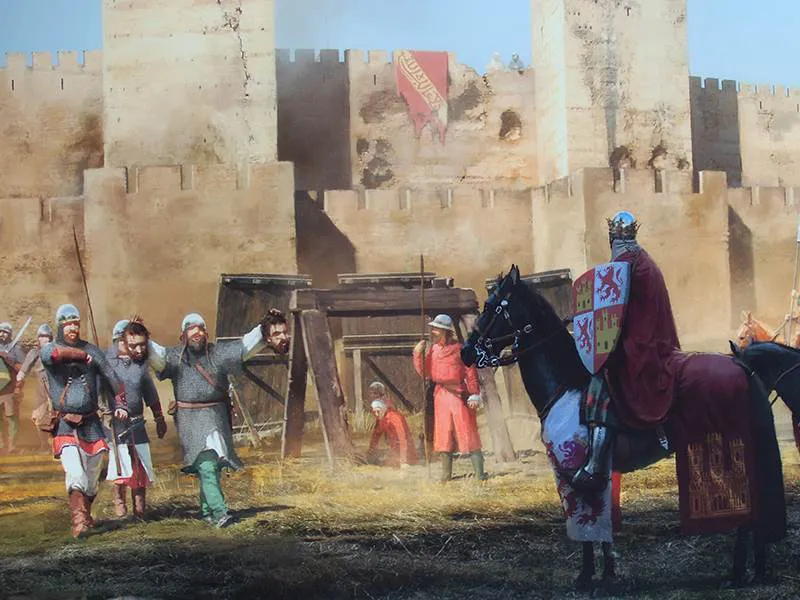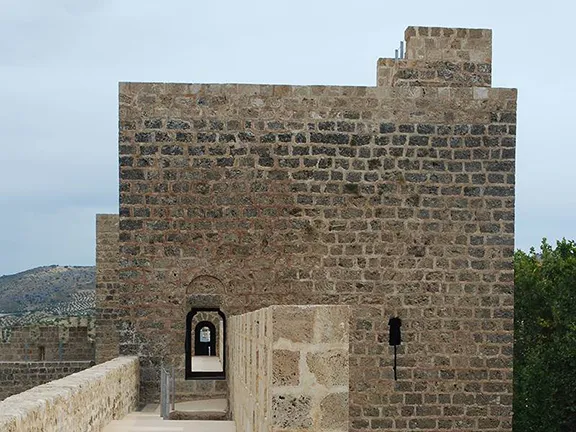Castillo de Priego de Cordoba in Andalucia, a mediaeval fortress
By Nick Nutter | Updated 25 Apr 2022 | Córdoba | Places To Go |
Login to add to YOUR Favourites or Read Later


Siege of 1341
Most Mediaeval fortresses in Spain have a Torre del Homenaje and the castle at Priego de Córdoba is no exception. Always the most substantial and imposing tower, it would be the last refuge if the remaining walls and towers were destroyed. Its function was to emphasise the nature of the feudal system on the populace. It was in the Torre del Homenaje that the ‘ceremonia del homenaje’ took place during which vassals swore allegiance to a noble and where lands were assigned, and military duties defined. This relationship was the basis of mediaeval feudalism. The Torre del Homenaje at Priego de Córdoba was built between 1246 and 1266 by the military order of the Knights of Calatrava.


Torre del Homenaje
The Castle of Priego de Córdoba was gradually configured throughout the Middle Ages, from the 9th through to the 15th centuries, with some later additions and modifications carried out during the Modern and Contemporary periods. Most of it was donated to the town by the descendants of Víctor Rubio Chavarri, its former owner, in 1996.


Outside the castle walls
During the 9th and 10th centuries the castle was the alcázar of the Moorish town of Madinat Baguh and the residence of the town governor. Little remains of the original alcázar and what we have comes from archaeological excavations that have been carried out. The Torre del Homanaje hosts a good pictorial history of the castle from its earliest period. The Moorish castle had a square floor plan, with towers at the corners and other towers and buttresses on the defensive walls.


Battlements
Ferdinand III sacked the town in 1225 and handed control over to his Islamic vassal, the Emir of Baeza. The Emir was murdered the following year and Madinat Baguh once more became part of al Andalus. In 1246, Ferdinand negotiated with King Muhammad I of Granada as a result, Madinat Baguh was surrendered to Ferdinand, whilst Muhammad regained the city of Jaen. The alcázar was handed over to the Knights of Calatrava. They began rebuilding the castle, starting with the Torre del Homenaje.


The Torre del Homenaje has three floors. The lower level has no access from outside and was used as a cistern. The remaining floors had multiple uses: storerooms, living quarters, bedrooms, areas for receiving visitors, etc. The windows of the third floor have attractive Mudejar style horseshoe arches.
The town was re-aquired by the Nasrids and it was Alfonso XI in 1341 who eventually finally reconquered the town after a siege that involved the use of huge mediaeval catapults. The catapult stones can still be seen in the patio of the castle.
In 1370, Enrique II handed control of the town to Gonzalo Fernández de Córdoba, Lord of the House of Aguilar. The Fernández de Córdoba family were responsible for most of the towers and outer walls that can be seen today, including the highest ones that face El Llano Square.
The castle is currently (September 2020) undergoing renovation. The original doorway - a high, round arch - and the early staircase, is alongside the current access. Inside, it is possible to visit the Torre del Homenaje in which there is a video and pictorial display of the history of the castle and town. The views from the top are extraordinary. Part of the battlements and one further tower are open. The space between the walls, the patio, is open whilst the northern part is closed for further excavations. Within the excavations you can see part of the original walls dating from the 9th and 10th centuries and an access gate from that period.
For opening times of Castillo de Priego de Cordoba click here